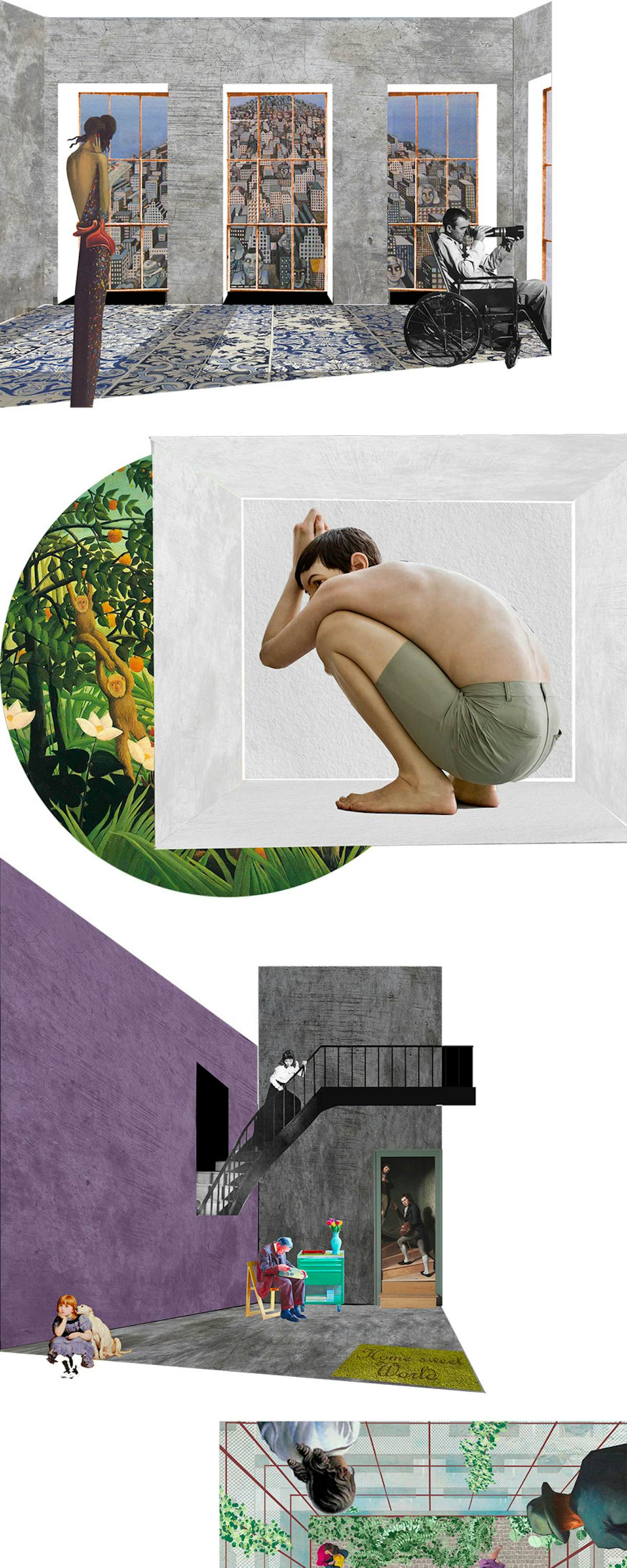Home, sweet world!
The confinement conditions imposed by the Covid-19 pandemic entail major changes for those who usually work in a place other than their own home. Leitmotiv of many recent reflections on domestic space, the house has been transformed into a place where domestic activities coexist in a forced way, with functions that, until then, had been carried out there in an occasional, spontaneous and punctual way: from telework, to original forms of family banquet, to sport and creative activities. This forced coexistence, which risks transforming the home into a prison, has also the power to create new synergies between the activities that populate it, generating profound transformations in contemporary domesticity.
The forced cohabitation poses real and interesting questions to us architects; first of all the question of intimacy: the personal space we are used to occupy inside the domestic environment is distorted by the many activities that are now carried out in our homes; the traditional partitions of the apartment are no longer able to define a sufficient number of separate spaces to fulfill all the required functions: therefore the need to reflect on new furnishing devices for the flexible distribution of space, for its soundproofing and for the creation of new levels of privacy arises.
The quarantine puts in crisis the long road that architecture has taken, from the Frankfurt kitchen to the Metabolist memory cells that survive in Tokyo in capsule hotels. We are referring to the idea of existenzminimum and the continuous search for optimization of living space towards standards that have often resulted in a mere gradual reduction of surfaces. This race to the bottom, of which many products can be traced, from the room of the Parisian university student to the studio-motel of the young contemporary employee, reveals all its unsustainability in the quarantine, when those spaces are no longer an accommodation to spend a few hours, but become our world in the life of confinement.
In the confinement we can also observe the return of the domestic hearth in its most modern forms, from meetings around the sofa, to moments of socializing around the radio and television. All this becomes an opportunity to conceive elements that go beyond a television and a smart speaker to become devices in which technology, on the one hand, and the symbolism and materiality of certain traditional furniture, on the other, can return to live together: technological totems for the contemporary home.
The common spaces of our living spaces, so often taken for granted to the point of being forgotten, suddenly become the meeting point with our neighbours, places for the sedimentation of old and new social interactions: this is the case of the balcony that turns into a stage for choral serenades, the roof adapted as a gym for yoga sessions or solarium for a tintarella di primavera (the real revenge of Le Corbusier's fifth point on architecture), the courtyard, rediscovered as a civic meeting place for kids' hour of air, ideal for an improvised football match. In this way, during the confinement, the shared space of our condominiums becomes a space of social resistance, the last frontier between us and the outside world of which we have been temporarily deprived.
When this emergency is over and we return to relive our homes as a domestic environment, it will be difficult to forget the moment when they had become our office, gym, garden, park, square, cinema and hotel, when our home had become our whole world.
The image is a combination of six visions:
1. The revenge of the roof garden
2. The window as a tool for the vision of life
3. The unsustainability of existenzminimum
4. The rediscovery of common spaces: the stairs as street
5. The rediscovery of common spaces: the courtyard as square
6. The rediscovery of domestic hearth
false mirror office
www.falsemirroroffice.com
